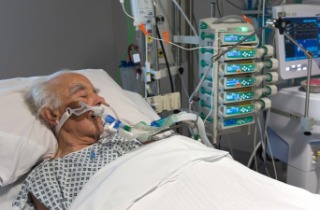Live healthy and long
The new protocol does not support intubation.*
*Results in 100% fatality
It is an oxygenation failure, not a respiratory failure
The paper admonishes vs use of ventilators to prevent mechanical injury. Let nature heal the patient, according to their literature
Covid 19 Management Protocol
URGENT! Please circulate as widely as possible. It is crucial that every pulmonologist, every critical care doctor
and nurse, every hospital administrator, every public health official receive this information immediately.
This is our recommended approach to COVID-19 based on the best (and most recent) available literature
including the Shanghai Management Guideline for COVID and recent information from Italy. We should
not re-invent the wheel, but learn from the experience of others around the world. It is important to
recognize that COVID-19 does not cause “typical ARDS”… this disease must be treated differently and it
is likely that mechanical ventilation may be exacerbating this situation by causing ventilator induced
lung injury (i.e. the ventilator may cause the disease we think we are treating). Patients suffer from
oxygenation failure and not lung failure. Furthermore, this is predominantly an immune and clotting
disorder and not a lung disease.
This is a very dynamic situation; therefore, we will be updating the guideline as new information
emerges. Please check on the EVMS website for updated versions of this protocol.
EVMS COVID website: https://www.evms.edu/covid-19/medical_information_resources/
Short url: evms.edu/covidcare
https://www.evms.edu/media/evms_public/departments/internal_medicine/EVMS_Critical_Care_COVID-19_Protocol.pdf?fbclid=IwAR0Ra7gzMrBhtVk7W2GMZjNrdeCGajDByxkw6hSAg5OJo6wTXJpp-qBVw5Y
Intubation is not recommended
Prophylaxis
While there is very limited data (and none specific for COVID-19), the following “cocktail” may have a
role in the prevention/mitigation of COVID-19 disease. While there is no high level evidence that this
cocktail is effective; it is cheap, safe and widely available.
• Vitamin C 500 mg BID and Quercetin 250-500 mg BID
• Zinc 75-100 mg/day (acetate, gluconate or picolinate). Zinc lozenges are preferred.
After 1-2
months, reduce the dose to 30-50 mg/day.
• Melatonin (slow release): Begin with 0.3mg and increase as tolerated to 1-2 mg at night
• Vitamin D3 1000-4000 u/day (optimal dose unknown).
Mildly Symptomatic patients (at home):
• Vitamin C 500mg BID and Quercetin 250-500 mg BID (if available)
• Zinc 75-100 mg/day
• Melatonin 6-12 mg at night (the optimal dose is unknown)
• Vitamin D3 1000-4000 u/day
• Optional: Hydroxychloroquine 400mg BID day 1 followed by 200mg BID for 4 days
Mildly Symptomatic patients (on floor):
• Vitamin C 500mg BID and Quercetin 250-500 mg BID (if available)
• Zinc 75-100 mg/day
• Melatonin 6-12 mg at night (the optimal dose is unknown)
• Vitamin D3 1000-4000 u/day
• Methylprednisolone 40 mg daily
• Enoxaparin 40-60 mg daily
• Optional: Hydroxychloroquine 400mg BID day 1 followed by 200mg BID for 4 days
• N/C 2L /min if required (max 4 L/min; consider early t/f to ICU for escalation of care).
• Avoid Nebulization and Respiratory treatments. Use “Spinhaler” or MDI and spacer if required.
• Avoid non-invasive ventilation
• T/f EARLY to the ICU for increasing respiratory signs/symptoms





